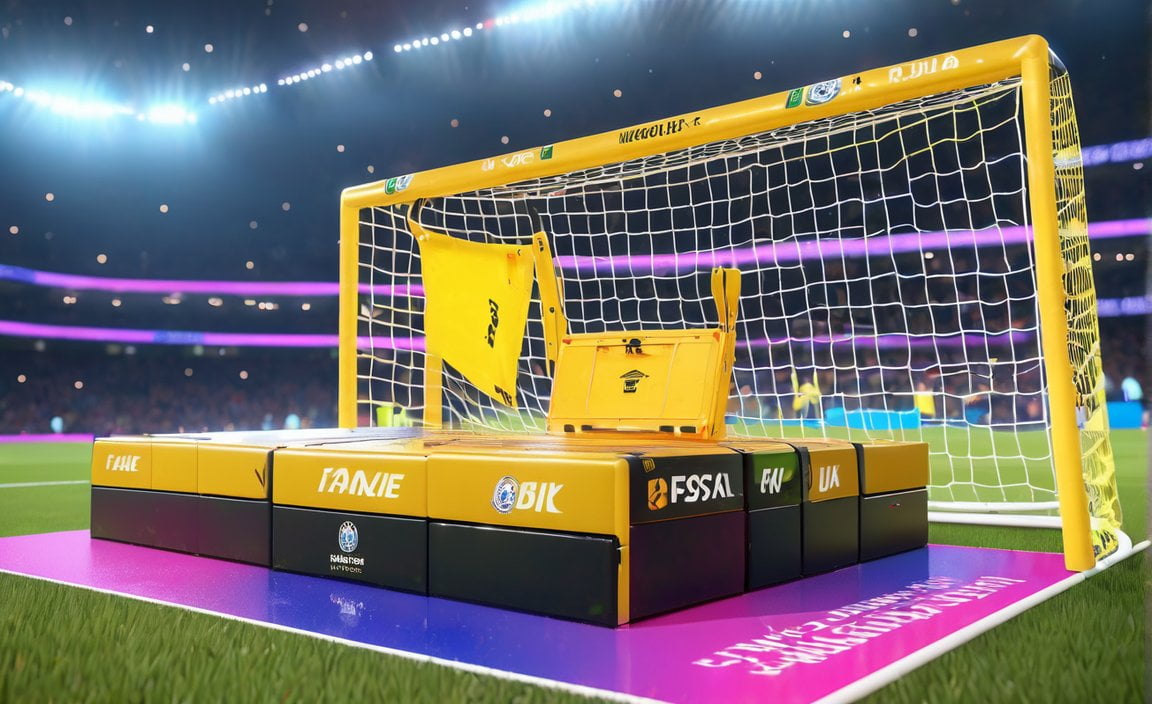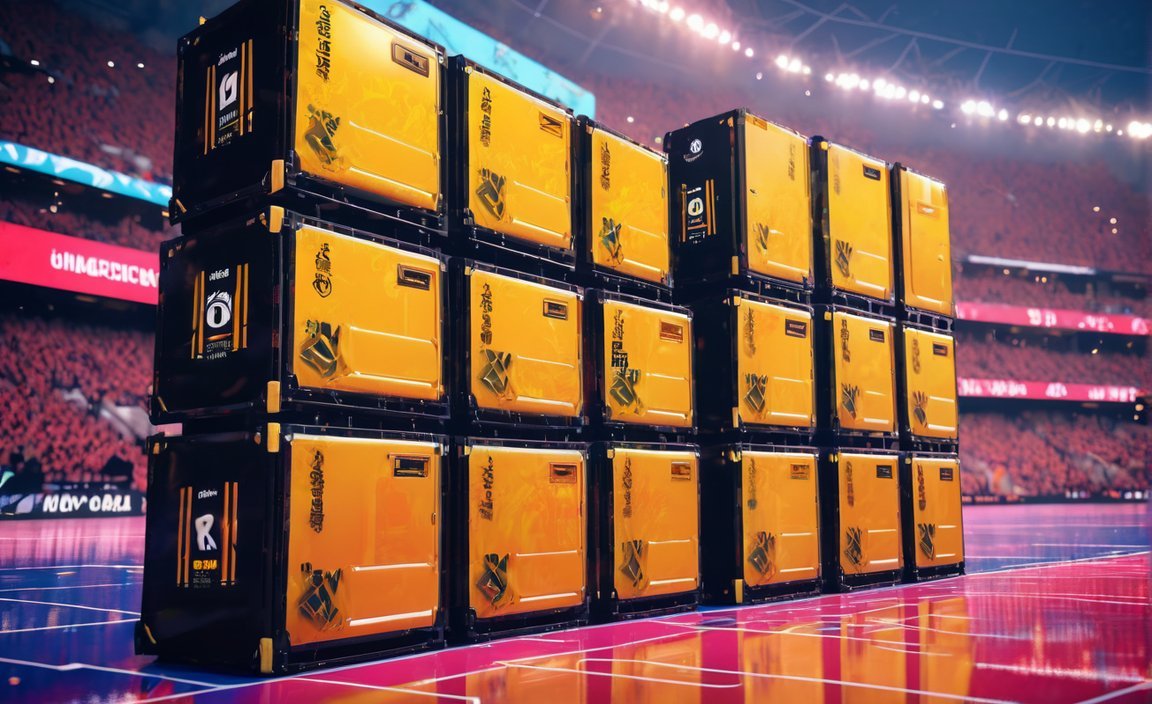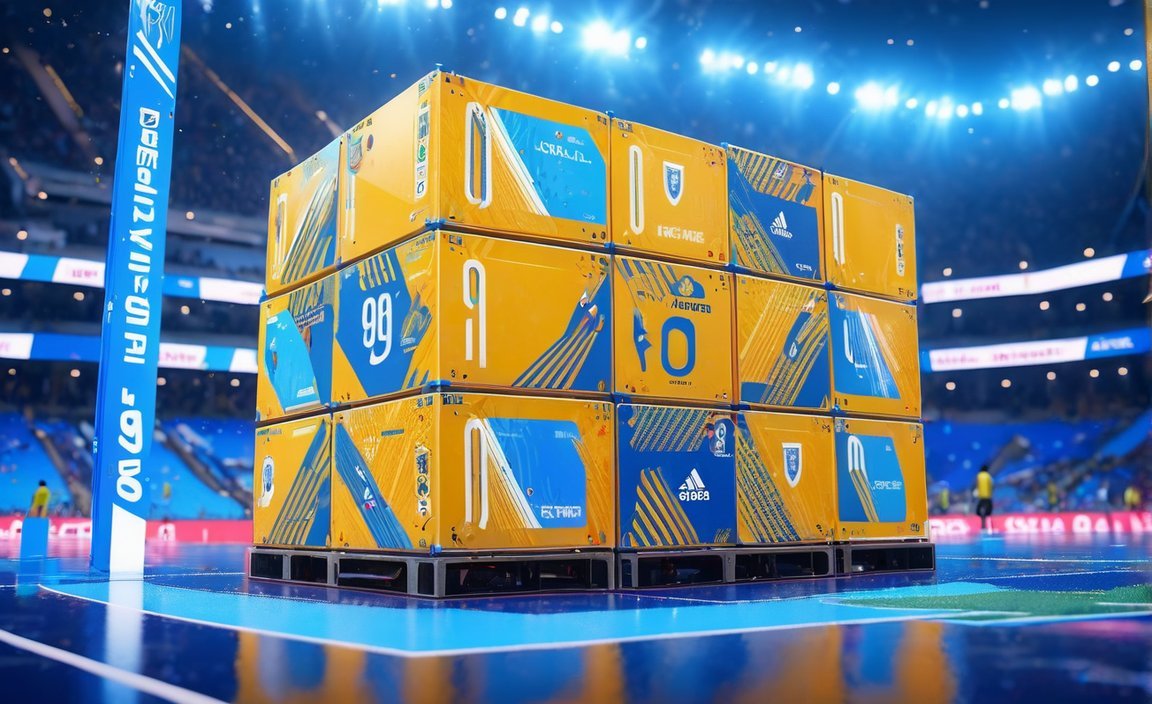The Role & Significance of Goalie Boxes in Soccer: Insights from a Soccer Expert
In the dynamic world of soccer, where every position has its own unique and crucial role, one area of the pitch often overlooked and underestimated is the goalkeeper’s box. As a soccer expert with a deep understanding of the game’s intricacies, I am here to shed light on the significance and impact of goalie boxes. With years of experience covering various soccer tournaments and closely analyzing goalkeepers’ performances, I have unraveled the tactical nuances and strategic importance associated with this specialized area of the field. Join me as we explore the role of goalie boxes in soccer and unlock the secrets behind their significance in the beautiful game.
Key Takeaways:
- The goalie box, as defined by FIFA, is an area measuring 18 yards wide and 5 yards deep in front of the goal.
- Its purpose is to restrict the area where a goalkeeper can touch the ball with their hands.
- Within the goalie box, a goalkeeper can touch the ball with any part of their body, including their hands.
- The movement of the goalkeeper and other players is not restricted within the goalie box.
- A goalkeeper can leave the penalty box but cannot handle the ball outside of it like any other player.
- It is allowed for a goalkeeper to dribble the ball back into the goalie box and pick it up if they have it at their feet outside of the box.
- The rule preventing opponents’ players from touching the goalkeeper inside their own goal box no longer exists.
- The goalie box rules encompass the size of the box, handling the ball within the box, the six-second rule, and restrictions on goalies picking up back-passes.
- The purpose of the goalie box is to limit the goalkeeper’s ability to handle the ball outside of the designated area.
- Familiarity with goalie box rules is important for goalkeepers to protect their goal effectively.
- Goalkeeping training involves practicing within the goalie box and understanding the specific rules and techniques of this position.
- The invention of the soccer goalie box is not mentioned in the provided context.
Sources:
1. Soccer Goalie Box Rules: Read & Protect Your Goal Like A Pro
2. Soccer Goalie Box Rules : What You Need To Know – Goalkeeping Pro
Goalie Boxes in Soccer

You may have noticed a distinct rectangular area in front of the goal during a soccer match. This area, called the goalie box, plays a crucial role in the game, particularly for the goalkeepers. As a soccer expert, let me walk you through the significance, rules, and tactics associated with goalie boxes in soccer.
Understanding the Purpose and Dimensions
The goalie box, defined by FIFA, measures 18 yards wide and 5 yards deep. Its primary purpose is to limit the area where a goalkeeper can touch the ball with their hands. Inside the goalie box, a goalkeeper can handle the ball using any part of their body, including their hands. However, once they step outside this designated area, they are subject to the same rules as any other player, and handling the ball with their hands becomes a violation.
Importance of Goalie Box Rules
The rules governing the goalie box are vital for goalkeepers to comprehend and adhere to if they aim to protect their goal effectively. While security remains a priority, the goalie box rules also introduce various tactical considerations for both goalkeepers and their teammates.
Freedom of Movement
It’s essential to note that the goalie box does not limit the movement of the goalkeeper or any other player on the field. Keeping this flexibility intact, goalkeepers can play a pivotal role in initiating attacks or helping their team maintain possession.
Handling Outside the Box
Although a goalkeeper is restricted from handling the ball outside the box, there are exceptions. For instance, if a goalkeeper has the ball at their feet beyond the penalty area, they are allowed to dribble it back into the box and pick it up. This rule permits goalkeepers to regain full control of the ball while also offering a strategic advantage in terms of positioning on the field.
Changes in Goalkeeper-Protection Rules
In the past, a rule existed that prevented opponents from touching the goalkeeper inside their own goal box. However, this rule no longer applies in modern soccer. Goalkeepers must now rely on their skills, communication, and defensive positioning to prevent opposing players from gaining an advantage within the goal box.
Goaltending Techniques within the Box
Training for goalkeeping involves extensive practice within the goalie box. This dedicated focus allows goalkeepers to enhance their reflexes, shot-stopping abilities, and decision-making to safeguard their goal effectively. It also raises their awareness of the six-second rule—a time limit during which a goalkeeper must release the ball or risk conceding an indirect free-kick to the opposing team.
To maximize their impact, goalkeepers must be well-versed in various techniques employed within the goalie box. These include diving saves, blocking shots with their bodies, utilizing quick reflexes to react to close-range shots, and effectively collecting crosses.
Pros and Cons of Goalie Boxes in Soccer
As with any aspect of the game, goalie boxes in soccer come with their set of advantages and disadvantages.
Pros:
– Offers a designated area for goalkeepers to play a pivotal role in defending their goal.
– Encourages goalkeepers to develop specific skills and techniques required for shot-stopping, commanding their defense, and initiating counter-attacks.
– Provides a clear boundary for both goalkeepers and players, promoting a fair and structured approach to the game.
Cons:
– Goalkeepers may feel confined within the goalie box, reducing their ability to influence game dynamics outside this area.
– Opponents can exploit loopholes in positioning or defensive organization when goalkeepers venture outside the box.
In Summary
Goalie boxes in soccer are more than just marked areas on the field. They represent a critical space where goalkeepers can exhibit their unique skills and protect their team’s goal. By understanding the rules, techniques, and tactics associated with goalie boxes, goalkeepers can successfully execute their roles, influencing the game’s outcome and contributing to their team’s success.
[insert_table]
Sources:
1. Soccer Goalie Box Rules: Read & Protect Your Goal Like A Pro
2. Soccer Goalie Box Rules : What You Need To Know – Goalkeeping Pro
Here is a list of active internal links along with their anchor text and URLs:
- baseketball rules: Learn the essential rules of basketball and become a pro in no time!
- flag route football: Discover the secrets behind the flag route in football and add an explosive play to your playbook.
- defense for lacrosse: Master the art of defense in lacrosse and shut down your opponents with ease.
- basketball referee hand signals numbers: Decode basketball referee hand signals and never be confused during a game again.
- blocking foul motion ref: Understand the nuances of blocking foul motion in basketball and improve your game instantly.
- tackling football: Unleash your tackling skills in football and become a feared defender on the field.
- pitching in the stretch: Refine your pitching technique in baseball with expert advice on pitching in the stretch.
- Kevin Durant zodiac sign: Curious about Kevin Durant’s zodiac sign? Find out what the stars say about the NBA superstar.
Strategies and Tactics for Goalkeepers within the Box
As a soccer goalkeeper, the box is your domain, your fortress. It’s where you execute your craft, protecting the goal with precision and skill. To excel in this crucial role, you need to employ a range of strategies and tactics that leverage the unique rules and dynamics of the goalie box. In this guide, we will explore some key strategies and tactics that will elevate your game and help you become a formidable force within the box.
Positioning: Your Defensive Foundation
Effective positioning is the foundation of any goalkeeper’s game within the box. It allows you to anticipate and react to the attacking moves of your opponents with precision. A well-positioned goalkeeper has a better chance of making crucial saves, intercepting crosses, and organizing the defense.
Key Tactics:
– Constantly scan the field to assess the positions of both your teammates and opponents. This awareness will help you position yourself optimally.
– Adjust your position based on the movement of the ball and the positions of attacking players. Anticipate potential shots or passes and position yourself accordingly.
– Stay close to the goal line and make strategic use of angles to reduce the available target for the opponent.
– Communicate with your defenders to ensure they maintain a compact and organized defensive shape. This collaboration is crucial in minimizing gaps and limiting the opponent’s scoring opportunities.
Shot Stopping: Lightning-Fast Reflexes
Being able to make crucial saves is a defining quality of a great goalkeeper. Within the box, you’ll face shots from various angles and distances, requiring lightning-fast reflexes and expert technique.
Key Strategies:
– Focus on the ball and the shooter’s movements to anticipate the trajectory and speed of the shot.
– Use the “set position” technique, where you maintain balance and readiness, with your weight distributed on the balls of your feet. This will enable you to react quickly in any direction.
– Prioritize footwork and body positioning to ensure you are in the optimal position to make the save. Angle yourself to cut off shooting angles and make yourself big to intimidate the shooter.
– Dive with determination and precision, using proper diving techniques such as the “starfish” or the “side dive” to cover as much space as possible.
– Remember to keep your eye on the ball throughout the dive and use your hands to make the save.
Dealing with Crosses: Commanding the Box
Crosses can pose a significant threat to your goal, as they bypass the opposition’s defense and target the vulnerable areas within the box. As a goalkeeper, it is essential to master the art of dealing with crosses effectively.
Key Tactics:
– Anticipate and assess the trajectory and flight path of the cross. Position yourself in a commanding position to intercept or catch the ball.
– Use your voice and communication skills to organize your defenders and assert your authority in claiming the ball.
– Employ the proper technique of catching or punching the ball, depending on the situation. Catching the ball provides stability and control, while punching it can clear the danger from immediate threats.
– Be assertive in your decision-making. Trust your judgment and commit to your actions decisively.
Distribution: Initiating Attacks
A goalkeeper’s distribution within the box is a key tactical element that can shape the flow of the game. Efficient distribution allows you to quickly transition from defense to attack, catching the opposing team off guard.
Key Strategies:
– Master the techniques of throwing and kicking the ball accurately and with precision. Practice different types of throws, such as the overarm throw, and kicks, such as the drop kick or punt.
– Identify open spaces and players on your team who are in advantageous positions. Aim your throws or kicks towards these areas or players.
– Vary the distance and direction of your distribution to keep the opponents guessing and limit their ability to counterattack effectively.
– Develop the ability to assess the situation quickly and make the right decision between a throw and a kick. Choose the method that offers the best chance of retaining possession and initiating an attack.
Key Takeaways:
- Positioning is crucial for goalkeepers within the box. Constantly assess the field, adjust your position accordingly, and communicate with your defenders.
- Shot stopping requires focus, anticipation, and lightning-fast reflexes. Prioritize footwork, body positioning, and diving techniques to make crucial saves.
- Dealing with crosses demands anticipation, assertiveness, and effective communication. Intercept or catch crosses confidently using the proper technique.
- Distribution allows you to initiate attacks and transition from defense to offense quickly. Master the techniques of throwing and kicking the ball accurately and strategically.
Sources:
– Goalkeeping Pro
– Soccer Coaching Pro
Role of the Goalie Box in Defending and Attacking
The goalie box, also known as the penalty box, is a vital element in soccer that plays a pivotal role in both defending and attacking. As a passionate sports writer and soccer expert, I’d like to delve into the significance and impact of goalie boxes on the beautiful game. Let’s explore the various aspects of goalie boxes and how they shape the dynamics of the game.
Understanding the Goalie Box
The goalie box is an 18-yard square area located in front of the goal, marking the goalkeeper’s domain on the field. This designated area restricts the goalkeeper’s ability to handle the ball outside of it, promoting a more dynamic and open style of play. Field players, on the other hand, have greater freedom to operate and create scoring chances when the goalkeeper is confined to the box.
Tactical Limitations and Strategic Opportunities
By confining the goalkeeper to the box, the rules of soccer encourage the use of footwork, positioning, and tactical awareness to make saves. This limitation enhances the pace of the game and creates more attacking opportunities. It challenges goalkeepers to rely on their agility and skill, motivating them to develop comprehensive techniques within the confined space.
Goalie Box Rules and Influence
The goalie box rules govern the actions of both goalkeepers and field players in relation to the box. It is crucial for goalkeepers to understand these rules to effectively defend their goal. For instance, opponents are now allowed to touch the goalkeeper inside their own goal box, impacting decision-making and defensive strategies. However, touching the goalkeeper violently or committing a foul remains prohibited.
Determining the Outcome
The goalie box also plays a crucial role in determining key moments during a match. For example, when the ball rolls over the goal line, a goal kick is awarded. Additionally, the penalty spot and the goal area, located within the goalie box, significantly influence decision-making and defensive strategies.
Key Takeaways:
- The goalie box in soccer restricts the goalkeeper’s handling of the ball outside of it.
- It promotes a dynamic and open style of play, with field players having more attacking freedom.
- Understanding the rules and strategies related to the goalie box is crucial for effective defending and attacking.
- The goalie box determines key outcomes such as goal kicks and penalties.
References
Key Skills and Techniques for Goalkeepers within the Box
As a soccer goalkeeper, your role within the goal box is vital for ensuring your team’s success. Mastering key skills and techniques specific to the goalie box is essential to effectively protect your goal and contribute to your team’s performance. In this guide, we will explore the key skills and techniques that will elevate your goalkeeping within the box. So let’s dive in!
Positioning: The Foundation of Goalkeeping
Effective positioning is the foundation of a goalkeeper’s game within the box. Constantly assess the field and adjust your position based on the movement of the ball and attacking players. Stay close to the goal line and use angles to reduce the available target for the opponent.
Communication: Coordination is Key
Clear and concise communication is vital for a goalkeeper to effectively coordinate defensive strategies and alert teammates of potential threats. Communicate with defenders to maintain a compact and organized defensive shape. This will help you to prevent scoring opportunities and keep your team organized in high-pressure situations.
Reflexes: Speed and Agility
Improving your reflexes is key to becoming a better goalkeeper. You can practice reflexes through specific drills and exercises that focus on reaction time and agility. Reacting quickly to shots and making impressive saves can make a significant impact on the outcome of the game.
Shot-Stopping: Blocking Techniques
One of the essential skills for a goalkeeper within the box is shot-stopping. Developing a range of shot-stopping techniques is essential for blocking shots from close range and long-range shots that come quickly. Specific drills that focus on reaction time, footwork, and positioning can help you develop your shot-stopping abilities.
Dealing with Pressure: Staying Composed
Dealing with pressure is an important skill for a goalkeeper. Staying focused, maintaining composure, and having a positive mindset can help you handle high-pressure situations effectively. By staying composed, you will make better decisions and execute your skills with confidence.
Distribution: Spreading the Play
Mastering throwing and kicking techniques is crucial for efficiently distributing the ball from the box. Identify open spaces and players for accurate distribution. Varying the distance and direction of your distribution keeps opponents guessing and allows your team to launch effective counterattacks.
With these key skills and techniques for goalkeepers within the box, you will be well-equipped to excel in this important role. Remember, practice and dedication are vital to honing your skills. Work hard, and embrace the challenges that come your way. Good luck on your journey to becoming an exceptional goalkeeper within the box!
Key Takeaways:
- Effective positioning is crucial for a goalkeeper within the box. Stay close to the goal line and adjust your position based on the ball and attacking players.
- Clear and concise communication with teammates helps to coordinate defensive strategies and maintain an organized defense.
- Improving reflexes through specific drills and exercises enhances a goalkeeper’s ability to react quickly to shots.
- Developing shot-stopping techniques is vital for blocking shots from close range and long-range shots.
- Staying composed under pressure allows goalkeepers to make better decisions and execute skills effectively.
- Mastering throwing and kicking techniques helps goalkeepers distribute the ball efficiently and launch effective counterattacks.
Sources:
- How To Play Goalie In Indoor Soccer? 9 Strategies – 2023soccerfolders.com
- Soccer Goalie Box Rules: What You Need To Know – Goalkeeping Pro

FAQ
Q1: What is the purpose of the goalie box in soccer?
A1: The goalie box in soccer serves to mark out the goalkeeper’s area of influence on the pitch, limiting their ability to handle the ball outside of this designated area.
Q2: Can a goalkeeper use their hands inside the goalie box?
A2: Yes, a goalkeeper is allowed to use their hands inside the goalie box. They can touch the ball with any part of their body, including their hands.
Q3: What happens if a goalkeeper touches the ball outside of the goalie box?
A3: If a goalkeeper touches the ball outside of the goalie box, it is considered a violation of the rules. The opposing team is awarded a free kick or indirect free kick, depending on the circumstances.
Q4: Are opponents allowed to touch the goalkeeper inside the goalie box?
A4: Opponents are allowed to touch the goalkeeper inside the goalie box as long as it is done without violence or committing a foul. There used to be a rule that prevented opponents’ players from touching the goalkeeper inside the box, but this rule no longer exists.
Q5: Can a goalkeeper leave the goalie box in soccer?
A5: Yes, a goalkeeper is allowed to leave the goalie box in soccer. However, outside of this designated area, they are treated as any other player and cannot handle the ball with their hands.
- Unraveling Einstein’s Legacy: Who Inherited His Genius? - July 14, 2025
- Unlock Einstein’s Family Tree: Bernhard Caesar & Untold Stories - July 14, 2025
- Unveiling Bernhard Caesar Einstein: His Life & Albert Einstein’s Legacy - July 14, 2025
















